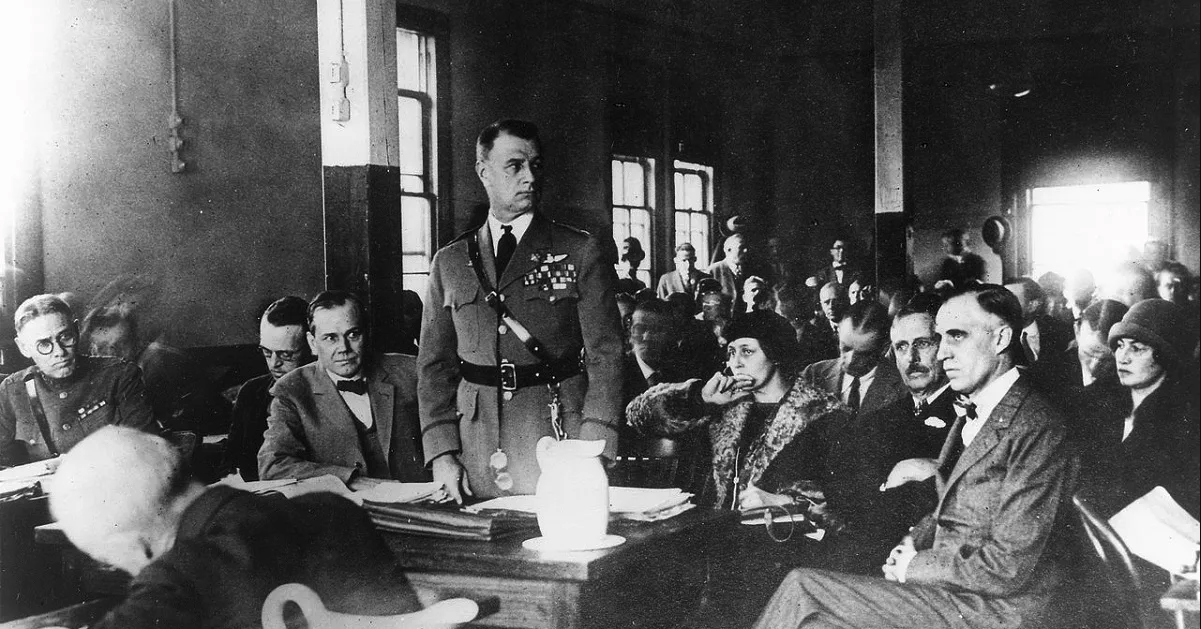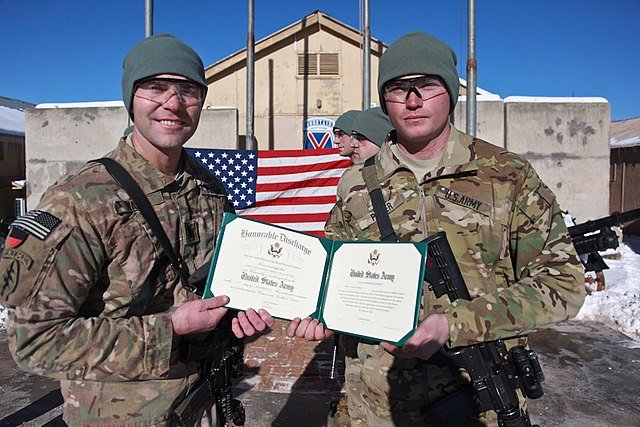
Photo courtesy of the U.S. Air Force.
A dishonorable discharge is, plainly, something nobody serving wants to get. It comes with a lot of adverse consequences that will follow you long into your civilian life and it’ll also will cost you any service-related benefits you may have acquired, including a military funeral, VA loans for a house, and medical care from the VA. If that wasn’t enough, you also lose out on the right to keep and bear arms.
The good news? There’s only one way to get this type of discharge that absolutely, positively, ruins your life. You need to be convicted in a general court-martial of violating any of a number of provisions outlined in the Uniform Code of Military Justice.
These include, but are not limited to: Striking a warrant officer (Article 91), failure to obey an order or regulation (Article 92), unlawful detention (Article 97), misbehavior before the enemy (Article 99), falsifying official statements (Article 107), and misbehavior of a sentinel or lookout (Article 113).
So, how often does this sort of thing happen? Well, during the shortest month of this year, Navy courts-martial, as summarized in this release, resulted in four sailors earning themselves dishonorable discharges.
Now, before we get started, know that commissioned officers cannot get discharges of any type. The officer equivalent of a dishonorable discharge is a dismissal from the service. Whether dismissed or dishonorably discharged, that service member forfeits all benefits.

The Manual for Courts-Martial has a detailed breakdown of what can earn you the dreaded dishonorable discharge. One way to get that life-ruining piece of paper is described on page II-134, “A dishonorable discharge should be reserved for those who should be separated under conditions of dishonor, after having been convicted of offenses usually recognized in civilian jurisdictions as felonies, or of offenses of a military nature requiring severe punishment.”
Another way, however, is called the “four strike rule.” If you’ve been repeatedly court-martialed and convicted of three offenses, your fourth will net you a dishonorable discharge. Described on page II-136 of the Manual for Courts-Martial, “If an accused is found guilty of an offense or offenses for none of which a dishonorable discharge is otherwise authorized, proof of three or more previous convictions adjudged by a court-martial during the year next preceding the commission of any offense of which the accused stands convicted shall authorize a dishonorable discharge and forfeiture of all pay and allowances and, if the confinement otherwise authorized is less than 1 year, confinement for 1 year.”

A third way is to get a death sentence for an offense, according to page II-139 (190 on the PDF). The manual states, “A sentence of death includes a dishonorable discharge or dismissal as appropriate.”
This is, in a sense, kicking you while you’re down. For all intents and purposes, you’re already dead, and they then stick your corpse with bad paper.
Perhaps the most notorious dishonorable discharge in recent memory is that of Bowe Bergdahl, who left his unit in Afghanistan and was captured by the Taliban. He received a dishonorable discharge for desertion and misbehavior before the enemy. As a result, he forfeited any and all benefits he would’ve earned from service.

Katie McCarthy is the managing editor for Coffee or Die Magazine. Her career in journalism began at the Columbus (Georgia) Ledger-Enquirer in 2008, where she learned to navigate the newsroom as a features reporter, copy editor, page designer, and online producer; prior to joining Coffee or Die, she worked for Outdoor Sportsman Group as an editor for Guns & Ammo magazine and their Special Interest Publications division. Katie currently lives in Indiana with her husband and two daughters.
BRCC and Bad Moon Print Press team up for an exclusive, limited-edition T-shirt design!
BRCC partners with Team Room Design for an exclusive T-shirt release!
Thirty Seconds Out has partnered with BRCC for an exclusive shirt design invoking the God of Winter.
Lucas O'Hara of Grizzly Forge has teamed up with BRCC for a badass, exclusive Shirt Club T-shirt design featuring his most popular knife and tiomahawk.
Coffee or Die sits down with one of the graphic designers behind Black Rifle Coffee's signature look and vibe.
Biden will award the Medal of Honor to a Vietnam War Army helicopter pilot who risked his life to save a reconnaissance team from almost certain death.
Ever wonder how much Jack Mandaville would f*ck sh*t up if he went back in time? The American Revolution didn't even see him coming.
A nearly 200-year-old West Point time capsule that at first appeared to yield little more than dust contains hidden treasure, the US Military Academy said.












